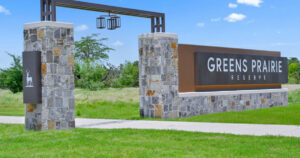Professors at A&M Explain the Rise in Prime, Choice Beef Over Last 20 Years
Changing Consumer Preferences
According to Ron Gill, a Professor and AgriLife Extension Livestock Specialist at Texas A&M University, consumer demand, improvements in genetic engineering, and efficiencies in production are the primary drivers of the increase in prime and choice beef production over the past twenty years. It was revealed that prime and choice beef production has doubled in the US, from a combined 40% twenty years ago to now over 80%.
For several years, the consumption of lean beef was encouraged due to dietary guidelines that linked fat with negative health impacts. However, the dryness and lack of flavour in leaner cuts led to consumer dissatisfaction, thus prompting a shift in the market and dietary guidelines.
Gill pointed out that when consumers pay higher prices for their steaks, they will want a guarantee of juiciness, flavour, and tenderness. This led the beef industry to pivot and use genetics to increase the marbling content in cattle through sire selection and breeding.
Efficiencies in Beef Production
While there has been a significant increase in the production of choice and prime beef, cattle numbers hit a peak of 132 million head in 1975 and have been declining ever since. However, despite the decline in numbers, the industry has seen an increase in beef production, rising from less than 250 pounds per cow in 1950 to over 660 pounds per cow today. It is believed that such improvements are due to technological advancements making the production process more efficient.
Over the last decade, there has also been an increase in higher yield grades, with the use of 4s and 5s becoming more prevalent. Yield grades are used to rank beef carcasses for cutability, meaning the quality of the meat has improved.
Genetic Enhancements
Professor Gill explained that during periods when cattle producers were forced to reduce their herds due to events like the 2011 drought, the better end of the herds was likely kept. This, along with the purebred industry’s development of better marbling genetics, led to an increase in cattle marbling scores.
For example, when purchasing a bull today, there are higher chances you buy one with a better genetic potential. This, in turn, positively impacts the commercial industry as these bulls are introduced into the cattle population and generate offspring with a higher genetic potential for marbling.
Taste Preferences
In contrast to traditional thought, the current consumer is knowledgeable about the beef they consume and values a prime eating experience. This has driven producers to increase high-quality selection when raising and mating livestock.
In fact, the increasing demand for high-quality beef is evident in the state’s leading authority on barbecue restaurant rankings. According to recent rankings, nine of the top ten restaurants use prime brisket. This indicates that consumers are willing to pay more for high-quality beef.
The Road Ahead
Looking to the future, Professor Gill stated that he does not anticipate a decline in prime and choice beef numbers. As the industry continues to evolve, there will likely be more branded beef programs and smaller regional packers. One essential question that remains is if the industry can sustain beef production given the shrinking cattle inventory due to climate disruptions.
The beef industry is clearly evolving, and it will be interesting to see how it develops from here.








